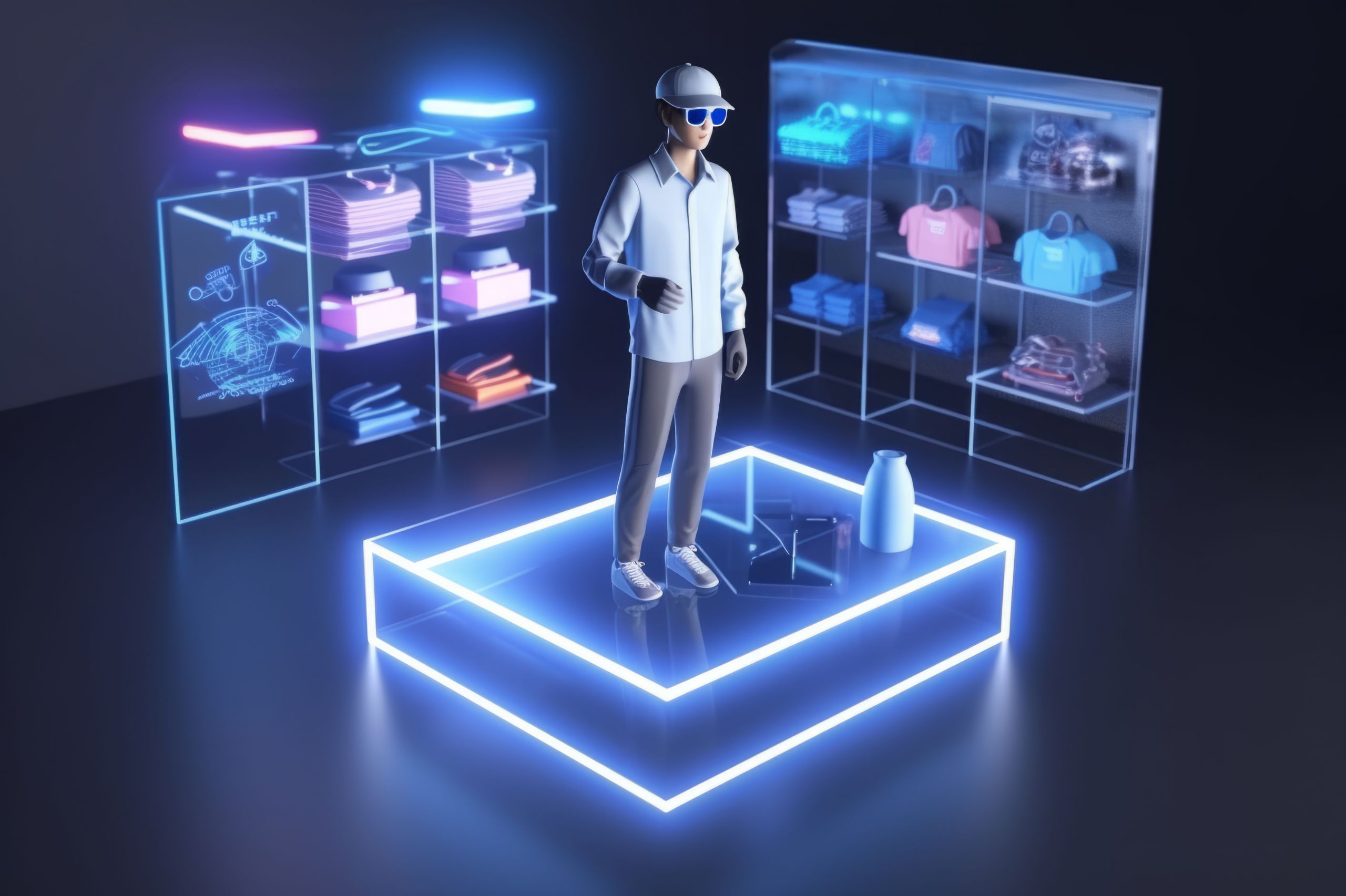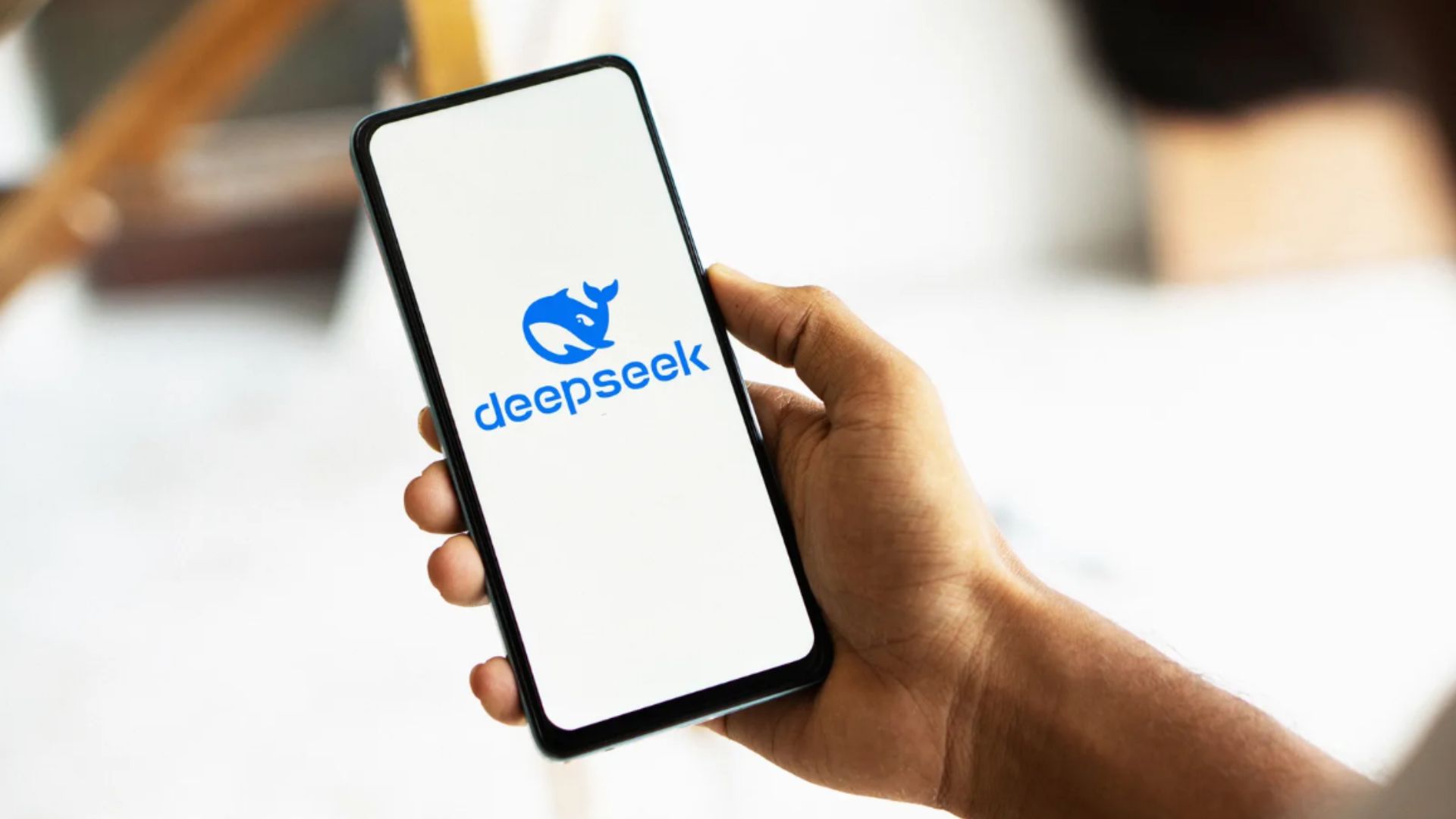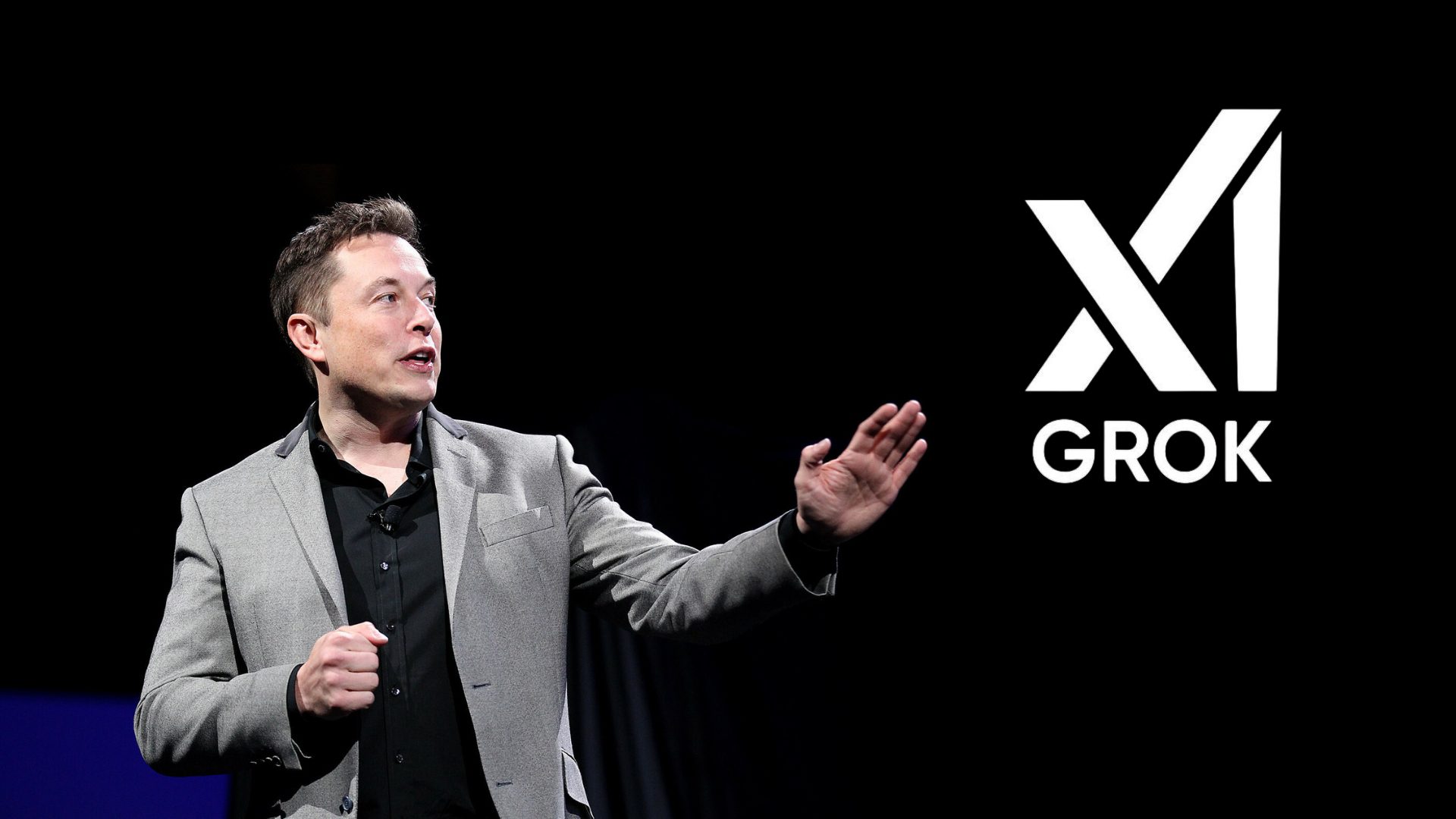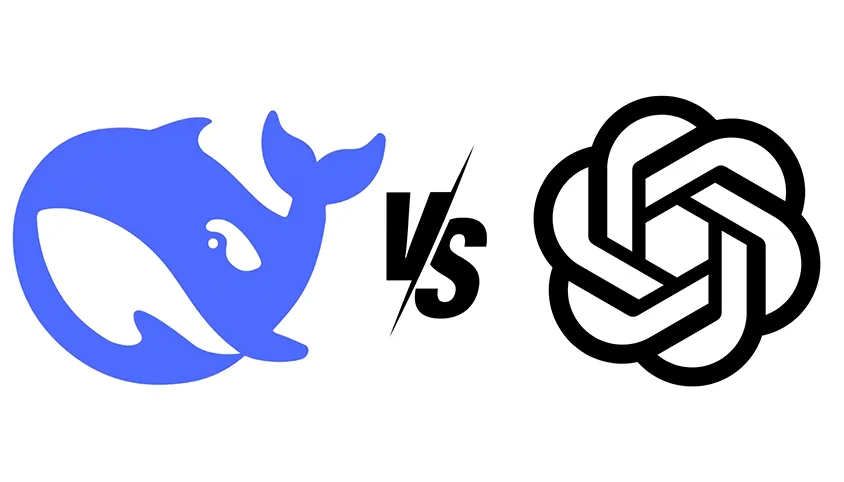-
Find Services
-
Generative AI
-
Blockchain Technology
-
Mobile App Development
-
Software Development
-
Web Development
-
E-Commerce Development
-
App Designing (UI/UX)
-
Web Designing (UI/UX)
-
IoT Development
- Industry
- Manufacturing
- Health Care
- Logistics
- Automotive
- Testing Services
- DevOps
- Game Development
- Robotic Process Automation
- AR & VR Development
- Browse All Services
-
Generative AI
-
Find Agencies
- Submit Reviews
- Research & Surveys

Artificial intelligence (AI) plays a classy role in transforming how businesses operate and customers shop. From personalizing online experiences to optimizing physical store layouts, AI is at the forefront of retail innovation. We will take you through this blog to explore how AI is reshaping the retail sector, addressing challenges, and setting new standards for customer satisfaction and business efficiency.
What is AI in Retail?
AI in retail is not just a recurring word; it’s a game-changer that brings automation, data analysis, and machine learning into various aspects of the shopping experience. Whether it’s online or in-store, AI enables retailers to offer personalized, efficient, and engaging experiences customized to individual customer needs.
Enhancing Online Shopping: In online retail, AI-driven tools like chatbots and virtual personal assistants are changing how customers interact with stores. These tools understand customer behaviour, purchase history, and preferences in real-time to offer similar recommendations and dynamic pricing. Imagine visiting an online store where every suggestion feels like it was handpicked for you—this is the power of AI at work.
Transforming Physical Stores: AI is equally transformative in physical retail spaces. By analyzing data from customer interactions with mobile devices and in-store sensors, AI helps retailers understand shopping behaviors and preferences. This data allows stores to optimize layouts, making shopping more intuitive and enjoyable. For example, AI can predict which products customers are likely to buy together and suggest strategic placements, boosting sales and enhancing the shopping experience.
The Growing Impact of AI in Retail: Key Statistics
The adoption of AI in retail is on the rise, and the numbers speak for themselves:
- Room for Growth: While 28% of retail businesses have already implemented AI, a significant 72% have yet to integrate AI into their operations, indicating vast growth potential.
- Inventory Management: By 2025, 68% of retailers plan to use AI to optimize inventory management and supply chains, highlighting AI’s role in improving efficiency.
- Economic Impact: AI is expected to contribute an additional $13 trillion to the global economy by 2030, according to the McKinsey Global Institute.
- Market Expansion: The AI retail market is projected to grow from $9.85 billion in 2024 to $40.49 billion by 2029, with a Compound Annual Growth Rate (CAGR) of 32.68%.
- Customer Preferences: Over 74% of consumers prefer using AI-powered chatbots for resolving common queries, citing convenience and speed as key benefits.
- Future Spending: Retail spending through chatbots is expected to skyrocket from $12 billion in 2023 to $72 billion by 2028, signalling a major shift in consumer behaviour.
Know the Industry Challenges with AI
Retailers face numerous challenges, from managing inventory to providing exceptional customer service. AI has solutions to these challenges, help businesses smooth operations and improve customer satisfaction.
- Procurement and Inventory Management
- Challenge: Traditional forecasting methods often lead to overstocks or stockouts, resulting in wasted resources or lost sales.
- AI Solution: AI-powered machine learning algorithms analyze sales data, seasonal trends, and external factors to provide accurate demand forecasts. This helps retailers optimize inventory levels, reducing costs and improving availability.
- Receiving and Inspection
- Challenge: Manual inspection processes are prone to human error, leading to overlooked defects and quality issues.
- AI Solution: AI-driven computer vision systems automate the inspection process, quickly identifying defects and ensuring products meet quality standards.
- Storage and Warehousing
- Challenge: Inefficient storage and picking processes can cause delays and increase labor costs.
- AI Solution: AI automates warehouse operations, optimizing product placement and streamlining picking processes, which reduces errors and speeds up order fulfillment.
- Dynamic Pricing
- Challenge: Static pricing strategies fail to adapt to real-time market conditions, resulting in missed revenue opportunities.
- AI Solution: AI algorithms analyze market data, competitor pricing, and customer behavior to adjust prices dynamically, maximizing profits and competitiveness.
- Visual Merchandising
- Challenge: Poorly arranged displays can lead to lower sales and a subpar shopping experience.
- AI Solution: AI analyzes customer movement and interaction within stores, helping retailers optimize product placement and enhance visual merchandising strategies.
- Sales Transactions
- Challenge: Manual checkout processes can lead to long wait times and errors, frustrating customers.
- AI Solution: AI-powered automated checkout systems, like self-checkout kiosks, streamline the transaction process, reducing wait times and improving accuracy.
- Customer Service
- Challenge: Managing a large volume of inquiries while maintaining service quality can be difficult, especially during peak times.
- AI Solution: AI chatbots and virtual assistants handle routine inquiries, providing quick responses and allowing staff to focus on more complex issues, ensuring consistent and high-quality service.
- Payment Processing
- Challenge: Securing payment transactions is crucial to prevent fraud and protect the business’s reputation.
- AI Solution: AI-driven fraud detection systems monitor transactions in real-time, identifying and flagging suspicious activity, which helps prevent fraud and enhances payment security.
- E-commerce Operations
- Challenge: Processing a high volume of online orders efficiently can lead to delays and errors in order fulfillment.
- AI Solution: AI automates order processing, optimizing workflows and reducing fulfillment times, which enhances overall efficiency and customer satisfaction.
- Promotions and Marketing
- Challenge: Targeting promotions effectively without deep insights into customer preferences can lead to wasted marketing spend.
- AI Solution: AI analyzes customer data to create personalized marketing campaigns, boosting engagement and conversion rates by targeting the right audience with the right offers.
Conclusion
AI is no longer just an emerging technology in retail—it’s a driving force that is reshaping how businesses operate and how customers shop. From enhancing online and in-store experiences to addressing industry challenges with innovative solutions, AI offers immense potential for growth and efficiency in the retail sector. As AI continues to evolve, retailers who embrace these technologies will be better positioned to meet the demands of the modern consumer, ensuring their success in an increasingly competitive market.
Latest Posts
Categories
Tags
Submit Your Inquiry
Related Posts

ChatGPT’s Image Generator Ignites a Studio Ghibli Art Revolution
Introduction: When AI Meets Anime Magic The internet is ablaze with whimsical landscapes, beloved memes, and iconic movie scenes reimagined in the dreamy aesthetic of Studio Ghibli—all thanks to OpenAI’s groundbreaking ChatGPT image generator. Launched as part of the GPT-4o upgrade, this tool has unleashed a tidal wave of creativity, turning everyday users into digital artists overnight. From Bollywood classics to Elon Musk memes transformed into Ghibli-style vignettes, the tool’s ability to blend AI precision with artistic flair has captured global attention. But what makes this feature so revolutionary, and why is Studio Ghibli at the heart of this frenzy? Let’s explore. What’s New in ChatGPT’s Image Generator? OpenAI’s latest upgrade, “Images in ChatGPT”, isn’t just another AI art tool—it’s a paradigm shift. Built natively into GPT-4o, the model is omnimodal, meaning it seamlessly processes text, images, audio, and video.Here’s what sets it apart: Style Transformation Mastery: Upload any image, and ChatGPT can reinterpret it in styles ranging from Studio Ghibli’s ethereal charm to South Park’s satire. Photorealistic Precision: Stunning details like realistic lighting, textures, and facial expressions push the boundaries of AI-generated art. Text Integration: Unlike predecessors, it accurately renders text within images—ideal for logos, posters, and infographics. No Watermarks: Outputs are clean, without DALL-E’s signature watermark, raising both excitement and ethical questions. The Studio Ghibli Connection: Why This Style Dominates Social Media Studio Ghibli’s films—Spirited Away, My Neighbor Totoro, and Princess Mononoke—are celebrated for their lush, hand-drawn aesthetics and heartfelt storytelling. The studio’s idyllic worlds, where everyday moments feel magical, resonate deeply with audiences. ChatGPT’s Ghibli-esque outputs tap into this nostalgia. Users are transforming personal photos, memes, and historical moments into scenes that could belong in a Miyazaki film. For example: A viral post reimagined Bollywood classics with Ghibli’s soft hues and whimsical character designs. Elon Musk’s rally jump became a fantastical leap over a Ghibli-inspired countryside. Even mundane objects, like coffee cups, gain charm when rendered with the studio’s signature “twinkle.” Why Ghibli? The style’s emphasis on nature, emotion, and simplicity aligns perfectly with AI’s strength in pattern replication. Yet, this trend also highlights a paradox: Studio Ghibli co-founder Hayao Miyazaki once called AI art “an insult to life itself,” critiquing its lack of human soul. Beyond Ghibli: ChatGPT’s Versatility in Art and Design While Ghibli dominates headlines, the tool’s versatility shines across creative domains: 1 .Pop Culture Mashups: Transform photos into Minecraft blocks, South Park characters, or vintage Polaroids. 2. Design Powerhouse: Generate logos, product mockups, and ad campaigns with precise color codes (using hex values) and transparent backgrounds. 3. Surrealism Unleashed: Combine absurd prompts (e.g., “a cat astronaut brewing coffee on Mars”) with styles like rubber hose animation or watercolor. How to Create Your Own Ghibli-Style Masterpiece Ready to join the trend? Follow these steps: 1 . Access the Tool: Available to ChatGPT Plus, Pro, Team, and API users (free tier rollout delayed due to demand). 2. Upload & Describe: Provide a clear image and prompt like, “Transform this into a Studio Ghibli scene with magical forests and soft lighting.” 3. Refine Details: Use follow-up prompts to adjust expressions, backgrounds, or add whimsical elements (e.g., “Give her a Totoro companion”). Experiment: Try blending styles (“Ghibli meets cyberpunk”) for unique hybrids. Ethical Considerations: Creativity vs. Controversy The tool’s launch hasn’t been without debate: 1 .Originality Concerns: Can AI truly replicate human artistry, or does it dilute creative integrity? 2. Miyazaki’s Stance: The Ghibli co-founder’s 2016 critique of AI as “disgusting” contrasts sharply with its current viral use.3. OpenAI’s Safeguards: The company blocks harmful content (e.g., deepfakes), but ethical dilemmas around copyright and attribution persist. Availability and Future of AI-Generated Art Despite its rocky rollout—Sam Altman cited unprecedented demand delaying free access—the tool signals AI’s growing role in democratizing creativity. Upcoming API integration for Enterprise and Education sectors promises broader applications, from marketing to interactive storytelling. Conclusion: A New Chapter for Digital Artistry ChatGPT’s image generator isn’t just a tool; it’s a cultural phenomenon. By bridging AI’s analytical power with human imagination, it invites everyone to re-envision their world through Studio Ghibli’s lens—or any style they choose. Yet, as we marvel at its potential, Miyazaki’s cautionary words remind us to cherish the human spirit behind art. Whether you’re a designer, meme lover, or Ghibli fanatic, this tool offers a canvas limited only by your creativity.

Top Programming Languages to Learn in 2025 for High-Paying Jobs
If you are new to software development, knowing where to start is the most challenging part of learning programming. Several hundred programming languages are used daily, each with quirks and challenges. The best news is that as you begin your career as a software developer, you'll start to learn the best coding language for your interests and goals.This blog post will cover the most in-demand programming languages and how to learn them to kickstart a coding career. What is a programming language? A programming language is a set of instructions written in a particular syntax to tell a computer what to do and how to do it. Mastering a programming language will enable you to create software applications, websites, and other digital tools shaping our world. Principal Programming Language Types There are many different programming languages, each with unique advantages and disadvantages, so consider this when choosing the best ones to learn.The main categories of programming languages are as follows: Languages for procedural programming: These languages decompose issues into sequential steps. Typical examples are Pascal, C, Cobol, and BASIC.Functional programming languages focus on altering data structures without changing existing data to provide more predictable results. Some well-known functional languages include Scala and Haskell. Programs in object-oriented programming languages are structured around objects that hold information (properties) and actions (methods). Python, Java, and C++ are well-known examples of this object-based methodology. Scripting and dynamic languages are lightweight programming languages frequently used to add interactivity to web pages or automate processes. Two popular scripting languages are JavaScript and Ruby. Logic programming languages use logic and reasoning to solve problems. They offer a distinct method for solving issues and are frequently employed in applications involving artificial intelligence. Prolog is a well-known example of a logic programming language. Top Programming Languages to Learn in 2025 As more than 700 programming languages are available, you probably want to know which is best to learn. Ultimately, your decision will be influenced by your professional objectives, skill level, and the languages companies use in their workplaces. These are the top 15 programming languages to learn in 2025 to get you started. 1. JavaScript With increasing demand for dynamic web applications, becoming a professional software developer is nearly impossible without learning JavaScript. According to Stack Overflow's 2024 Developer's Survey, JavaScript is the most popular programming language among developers for the eleventh year in a row, with 62% of survey respondents reporting that they had used it the past year. Most of the most visited sites on the web, including Facebook, Twitter, Gmail, and YouTube, use JavaScript to develop interactive web pages and dynamically display content to users. The extensive list of applications makes JavaScript one of the finest programming languages to learn.Major Features: Versatility: JavaScript can be utilised for front-end as well as back-end development.Interactivity: It provides dynamic functionality to web pages, making them engaging and responsive.A large community: The JavaScript community is significant and growing! Those looking to learn it can find extensive online resources, including tutorials, frameworks, and other tools that make learning and troubleshooting easier.Prerequisites: A foundational grasp of HTML and CSS is advised for efficient JavaScript web development.Skills Required: Potential JavaScript programmers should be capable of addressing problems and interested in procedural reasoning, logic, and problem-solving.Platforms: Node.js server-side environments and web browsers. Examples of Use: Developing dynamic web components Constructing dynamic online apps Creating apps that are only one page (SPAs) Including user interfaces and animations JavaScript engineers typically make around $116,340 a year, as per Indeed Oct 2024. 2. Python Python is arguably the most accessible programming language on this list. Its syntax is straightforward and intuitive, particularly for English speakers, since it follows grammar rules. This makes it a favourite among beginners looking for the best programming languages to learn for themselves.Key Features: Readability: Python's simple and concise syntax is similar to natural language, making it more straightforward to learn and maintain. Versatility: It’s widely used in web development, data science, scripting, machine learning, and other applications. Extensive libraries: Thanks to a vast collection of pre-written code (libraries), it’s easy to simplify complex tasks and streamline development with Python. Prerequisites: Programming in Python requires a basic understanding of computer science concepts, which is helpful but not integral. Skills Needed: Python programmers should be solution-focused and interested in structures and data analysis. Platform: All major operating systems (Windows, macOS, Linux) Use Cases: Web development (back-end)Data science and machine learningScripting and automationScientific computingGame development (with frameworks) Average Salary: Python developers earn around $125,102 per year as per Indeed Oct 2024 3. SQL In addition to Python, SQL coding is crucial to effectively using data in web applications and is, therefore, among the best programming languages to learn. While other coding languages are on our list, SQL explicitly allows storing, retrieving, and manipulating data in a given relational database. Key Features: Standardised use: SQL is supported by a majority of database management systems. Declarative ability: Its operation depends on what information to fetch or handle rather than the exact steps. Relational functionality: SQL allows querying and handling information among related tables in a database. Prerequisites: Familiarity with database management concepts is ideal for SQL. Skills Required: SQL programmers must learn data structures, storage, and retrieval. Platform: All major database management systems (e.g., MySQL, PostgreSQL, Oracle) Use Cases: Data retrieval and manipulation in relational databasesMaking reports and data analysisMaintenance and management of databasesIntegration with other programming languages for data-driven applicationsThe average Salary as per the Glassdoor June 2024 is $116,507. 4. Swift Swift has become the popular language for creating contemporary iOS, iPadOS, macOS, watchOS, and tvOS applications. Apple introduced Swift in 2014, a new programming language to develop iOS and macOS applications. Swift has been optimised for performance and built from the ground up to match the realities of modern iOS development, making it one of the best programming languages to learn for aspiring iOS developers. These developers will likely remain in demand as Apple products remain the most profitable mobile app marketplace. Key Features: Modern Design: Swift offers a safe, readable, and expressive syntax for efficient development. Platform Integration: It seamlessly integrates with Apple's development tools and frameworks. Safety Features: Swift emphasises memory and type safety, reducing crashes and errors. Prerequisites: Ideally, those looking to specialise in Apple programming are interested in iOS functionality. Skills Needed: Coders working in Swift should have some existing familiarity with Apple's development tools (Xcode)> Platform: Apple platforms (iOS, iPad, macOS, watchOS, tvOS) Use Cases: Building native iOS, iPad, macOS, watchOS, and tvOS applicationsMaking multimedia applications and computer games for Apple devices Mean Salary: $119,319 (Indeed, Oct 2024) 5. Java Java is still a leader in programming, particularly for enterprise software development. Its write-once, run-anywhere concept and mature environment make it a go-to option for developing large-scale applications such as servers. Key Features: Platform independence: Java code can be executed on multiple operating systems without alteration.Object-oriented functionality focuses on code reusability and maintainability by following object-oriented concepts.Large libraries and frameworks: Java has a healthy collection of libraries and frameworks supporting various development purposes.Prerequisites: Basic notions of coding could be helpful.Skills Required: Analytical minds, object-oriented programming principles, knowledge of major Java libraries and frameworks (in case of higher-level development)Platform: Every central operating system (Windows, macOS, Linux)Applications: Enterprise application construction (web, desktop, mobile with frameworks)Big data processing (Hadoop)Android developmentEmbedded system development Average Salary as per (Indeed, Oct 2024) $91,234 Best Programming Languages to Learn to Fulfill Your Career Aspirations Only you can answer the question of the best programming language to learn for your career aspirations. Your choice should be based on your career interests and whether you want to develop front-end or back-end web-based software. In brief, this is what we have discussed so far: Front-end web development: JavaScript, TypeScriptBack-end web development: JavaScript, TypeScript, Python, Go, Elixir, C#Mobile development: Swift, Java, C#Game development: C#Desktop applications: Java, Python, JavaScript, TypeScriptSystems programming: C, Rust, Go It’s Code Time Computer programming is a fast-changing field; however, the languages above bear much staying power. Learning one or more of them will place you in an excellent position this year and for years. Once you master one programming language, learning a second language will likely be easier since you can draw on existing knowledge.

A to Z About DeepSeek: AI tool launched from China
The Hidden Danger of Ignoring Deepseek AI – Your Competitors Are Already Using It Are you also looking to switch from ChatGPT to Deepseek and came here to get detailed information about It? If so, you have landed on the right page. Introduction DeepSeek is an artificial intelligence company that originated in China. It has gained so much attention for its open-source, low-cost large language models (LLMs), particularly its "R1" model, which is considered on par with leading AI models like OpenAI's GPT-4. It was developed on a very low budget, which was its primary focus to stay in the AI market by challenging the tech giants of the USA. Also, the company has kept their AI model open-source, allowing wider usage and collaboration. What is DeepSeek AI? As the name DeeepSeek itself says, “deep learning" is to identify large blocks of data to help solve a vast array of problems. It was founded by Liang Wenfeng, who established the company in 2023 and serves as its CEO. The company behind the development of DeepSeek is High-Flyer. The Deepseek was launched in December 2023 in the market. Deepseek AI excels in language processing and data security but has fewer language options than ChatGPT and Gemini. The languages supported by DeepSeek are Chinese and English. Why is DeepSeek AI making headlines? DeepSeek is making headlines in the stock market and SERP because a Chinese startup has launched powerful AI models such as the R1 model. They challenge the idea that US businesses are winning the AI race and raise investor concerns about possible market disruption since they are considered equivalent to top American AI systems like ChatGPT but at a far cheaper cost to create and operate. With China’s growing generative AI development companies, Deepseek AI is set to become a strong contender in the global AI market. Essential Elements of Deepseek AI Deepseek AI is a potential AI tool since it has several cutting-edge characteristics. What makes it unique is this: Natural Language Processing (NLP) at an Advanced Level With its very complex natural language processing (NLP) model, Deepseek AI excels at comprehending and producing human-like prose. Multimodal Proficiency: It is a flexible AI that can assist in a variety of sectors because it can recognise text, audio, and images. Personalised AI Solutions: Businesses may include Deepseek AI in their operations for individualised AI experiences. Better Processing of Data: In contrast to its rivals, Deepseek AI concentrates on practical data analysis, assisting businesses in concluding sizable datasets. AI with a Privacy Focus: Deepseek AI strongly emphasises user privacy and data security in light of China's stringent data restrictions. How Does Deepseek AI Work? Like other AI tools, Deepseek AI understands human language and produces intelligent replies using deep learning and machine learning techniques. The AI Framework Underpinning Deepseek Like Google's Gemini and OpenAI's ChatGPT, Deepseek AI is based on a Large Language Model (LLM). Because it has been trained on large datasets, it can comprehend the linguistic context and offer insightful responses. Data Training and Optimization Training data sources allows DeepSeek to work—a combination of licensed datasets, private research, and publicly accessible data. Optimisation makes use of sophisticated fine-tuning methods to improve accuracy and lessen bias. Integration & API For companies and developers looking to incorporate AI into websites, applications, and customer support bots, Deepseek AI provides an API. Deepseek AI Applications Deepseek AI has applications in a number of domains, such as: Content Creation: Automates activities like writing, editing, and summarising. Customer service: improves virtual assistants and chatbots. E-commerce: Product ratings and suggestions are powered. Education: Helps the students with their homework and research. Data Analysis: Businesses may get insights from big datasets using data analysis. How to Use and Gain Access to Deepseek AI? To begin utilising Deepseek AI, take these below-given actions: First sign up. Go to the official Deepseek AI website to register. Select a Strategy There can be choices for both paid and free subscriptions. Start a conversation and utilise it through an API integration, mobile app, or online app. Be aware that certain functions can be restricted due to AI laws in your nation. The Drawbacks and Difficulties of Deepseek AI Despite its strength, Deepseek AI has certain drawbacks. Limited Support for Languages: primarily on English and Chinese at the moment. Regulatory Difficulties: Affected by China's stringent AI laws. Data Privacy Concerns: Because of compliance concerns, it might not be accessible in some areas. Competition: Faces fierce opposition from well-known AI tools such as Gemini and ChatGPT. Deepseek AI's Future It is anticipated that Deepseek AI will expand with: Increased Language Support: Global market expansion. Better AI Capabilities: Developments in multimodal AI, memory, and reasoning. Business Adoption: More businesses are automating tasks with Deepseek AI. International Growth: Taking on AI technologies from the West. Conclusion Deepseek AI is a revolutionary tool from China that can potentially disrupt the global AI landscape. Its advanced NLP, strong data privacy, and business-friendly AI solutions make it a viable alternative to ChatGPT and Gemini. However, its limited global availability and regulatory challenges could slow its adoption outside China. Deepseek AI is expected to expand and improve as AI technology evolves, making it one to watch in the coming years.







